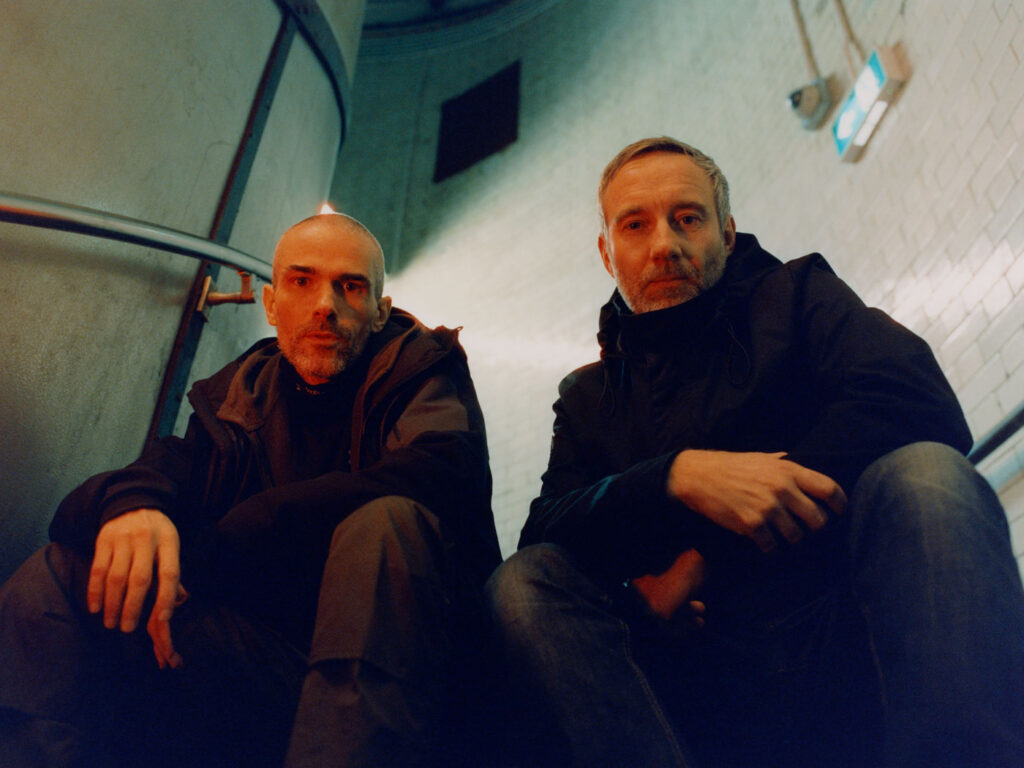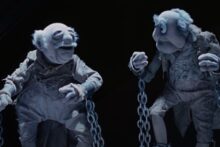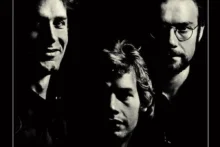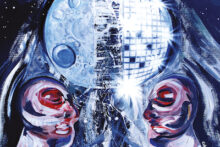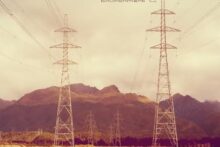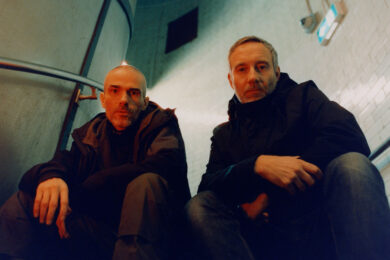Electronic music keeps evolving whether we are listening or not. Software synths and virtual instruments allow musicians to craft and control any conceivable type of sound; rare synthesizers can be played via easy to find emulators; sophisticated tuning software like Melodyne allows voices to be taken out of recordings and fooled around with in every possible way. Other tech innovations are blurring the lines between music makers and the machines they control, such as increasingly impressive AI audio mastering tools. Stepping back more generally, for a decade or two now, most of what listeners or punters at gigs experience has passed through multiple iterations of electronic processing – compression, effects, gates, limiters – even if you think you’re hearing guitars and drums.
Machines are not suddenly making the music for us. If you’ve fooled around with music created by AI, using machine learning libraries trained on audio, you might recognise the experience of being simultaneously impressed by the uncanny similitude of what it pumps out, and depressed by the lack of space, sideways steps, and surprises that marks out a good piece of music from the rest. The results conjure the image of an artist working next to a canvas with a magnifying glass while being incapable of stepping back. Ted Chiang summed up the situation in a recent essay Why AI Isn’t Going To Make Art for The New Yorker, in which he stressed the huge number of different aesthetic decisions that go into making art in any medium, spanning composition, balance, texture, expanse, duration, creation of space, etc. No computer system will be able to meaningfully make those decisions any time soon.
Some even find even that there are too many options for making music with computers these days. The range of choices and menus on digital audio workstations can be paralysing first time around, and Mark Fell, in an essay for The Wire, talks eloquently of the immersive joy of “chance wired” systems instead. But for those willing to explore its infinite networks and geometries, the awesome possibilities of modern electronic sound seem to offer access to the sublime – a dizzying spectrum Spring Heel Jack evoked with their album title 68 Million Shades.
Condensing the powerful possibilities of modern electronic music down to a neat artwork – the album – is increasingly challenging. UK duo Autechre make music in a way that’s intuitive and personal, and explores just a small zone of what’s currently possible. But Sean Booth and Rob Brown work in such an uncompromising and radical manner that they approach the cutting edge and logical limit of this music and have wrestled with how complex music can be presented to the listener without diluting its full force and form. Over the last decade or so, they have met some of the big issues involved in contemporary electronic music head on: selecting or discarding sounds from a near infinite array of options, finding an appropriate frame to put around an extensive archive of recordings, and guarding aesthetic principles so that the music maintains its integrity and relevance in the wake of what has come before.
One of the duo’s working methods has been sending back and forth globs of code created in Max, a visual programming environment for audio, until interesting sounds and music start to develop. By working with programming, probability, logic, chance operations and the like, the traditional boundaries in electronic music between sound synthesis (making the sounds) and sequencing (organising them) effectively ceases to exist. A great Ask Autechre Anything thread on the We Are The Music Makers forum gave a useful insight into some of their composition methods back in the 2010s (the direct line of communication between fans and artist, including forensic comparisons between individual tracks and sounds, opens up lines of inquiry that a more general journalistic approach could never crack). Autechre still make dance music, but their rhythms are sometimes a matter of algorithms.
Given the home-brewed systems that Autechre use, the line between their studio and live work can become blurred when both are, on occasion, products of similar apparatus. They’ve talked in the past of how software used in the 2010s on albums such as Oversteps and Exai would be part of their tour set-up. The way those interfaces are used naturally evolves on the road, and then inevitably feeds back into the creative process of making the next album.
Around the middle of the 2010s, Autechre began to experiment with albums and tracks of long duration. Tracks like ‘elyc6 0nset‘ and ‘eastre‘ began to run for well over 20 minutes, and the collection they were part of, Elseq 1–5, was a quintet with a run time in excess of four hours. For the listener, the natural conclusion was that conventional CDs or LPs were no longer a big enough musical canvas for them to work with. Like many experimental musicians, the pair have an interest in durational cinema where gradual developments can dovetail and diverge in an almost symphonic way, and they’ve expressed a particular interest in David Lynch’s work. There’s a neat resonance that, after Lynch delivered his most experimental and elongated work Twin Peaks: The Return, with a time-travelling narrative which whirled 30 years into one mesmerizing Möbius strip, Autechre dropped their NTS Sessions, a mammoth chunk of music that ran for around eight hours which was originally broadcast on London station NTS.
Autechre’s albums and live work seem to increasingly inform and inspire each other. Both take logical ideas to radical conclusions outside of the restrictions of the discrete tracks of dance music. And over the last decade, the group’s official releases have increasingly highlighted their live material. 2015’s AE–LIVE was a huge tranche of material recorded in tours in the prior year, and 2020’s AE_LIVE 2016/2018 unveiled lengthy sets recorded over seven dates from a later period. Over three and a half decades into their career, Autechre have come to a place where they can push their ideas and the machines as far as they can go, wherever they happen to be or who might be listening.
The group has certainly perfected a unique live experience. A typical Autechre live show is a single piece of music that’s unravelled over the course of an hour or a bit more, with no encores. All of this typically takes place in darkness or at least low light, the motivation seemingly to make the live experience as pure and unmediated as possible, whatever the location. Neither Booth nor Brown tend to move or show much reaction while playing, often crouching down as if to remain partially hidden behind their laptop screens. That cold body language might lead you to think they are subjecting the crowd to a merciless wall of sound. But the rapt attention and unbroken focus with which the pair – motionlessly – work suggests they’re editing and restructuring as they go, removing as much fat as possible and keeping the music lean and keen.
A 2015 set from Gräfenhainichen in Germany begins with with a tight knot of bass and beats which becomes increasingly fractured until the main rhythm falls apart, and new sets of pulses and vibrations accrue again and again, in a process that seems something like a type of gravity. The 2016 to 2018 sets are substantially different, often exploring tone and texture as much as rhythm – in the set from Zagreb, for example, strings of synthetic sounds are stretched out until it feels as if you may actually see the individual wave forms.
Autechre aren’t the only electronic musicians who used live shows as a blank canvas to trace their music to its farthest extremes. Back in the 1990s, The Orb used gigs as a freeform headspace in which they could wig-out, go on goofy dub excursions, and deconstruct and subvert their already freaky studio records. Their Live 93 album was, far from a stop-gap release, one of the deepest trips into the musical playground known as ambient house. While fellow electronica pioneers The Future Sound Of London withdrew from public appearances around the same time, their live performances, conducted over the internet from their studio via ISDN, which included a memorable Radio 1 Essential Mix for Pete Tong, became some of their most radical performances, dovetailing music, movie dialogue, found sound and DJing.
Moving sideways, Autechre’s heroes Coil created a weighty body of live work, particularly after they returned to gigs in the 2000s, and these became an important part of their artistic legacy. As with Autechre, their performances were never the same, versions of tracks were reworked depending on the moment, and fans find endless detail and nuance to assess and evaluate. Despite the very different music, the sense of atmosphere and focus that Coil created has a similar intensity.
Look closely, and you can find parallels with Autechre’s live work outside of electronic sound. Their computer-guided explorations shouldn’t be confused with the spontaneous inspiration (or instant composition) of jazz, or the way rock band The Grateful Dead used certain songs as launchpads for interstellar exploration. But their forensic documentation of live events, and clued-up fanbase of fellow travellers, resembles how King Crimson have handled their archive of recordings. The prog rock band moved through several different line-ups in the 1970s, including various vocalists and lyricists, with guitarist Robert Fripp their constant and main guiding force. Each configuration brought different skills and instrumental approaches to the table, with players from jazz such as Keith Tippett, Mark Charig and Harry Miller adding new textures and techniques. Although their gigs were exacting and sometimes exhaustive explorations of their studio albums, they also left spaces left for players to improvise around and extend the material. The rigour of King Crimson’s methods, their flat refusal to take the easy or obvious option without that leeway being earned, and the way that they plugged new sounds and instrumentation into their music to renew it at regular intervals, carries strong echoes of Ae.
But in the present moment, Autechre’s live music is an epic oeuvre of radical composition and decomposition accelerated by the power of the microchip, as well as one the wildest workouts you can imagine for body and mind.

